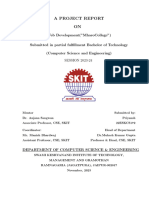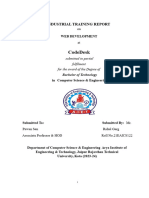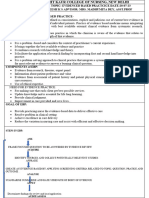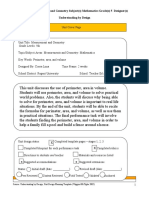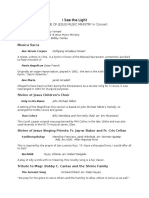0% found this document useful (0 votes)
20 views23 pagesTraining Report Sample
Internshala Technologies is an innovative IT company focused on revolutionizing software design and delivery while promoting social change. The document outlines various aspects of web development, including technologies like HTML, CSS, JavaScript, and React, as well as the importance of databases and APIs. It emphasizes the role of React in creating efficient, scalable web applications and highlights the significance of modern web development in today's digital landscape.
Uploaded by
Raj ThakurCopyright
© © All Rights Reserved
We take content rights seriously. If you suspect this is your content, claim it here.
Available Formats
Download as DOCX, PDF, TXT or read online on Scribd
0% found this document useful (0 votes)
20 views23 pagesTraining Report Sample
Internshala Technologies is an innovative IT company focused on revolutionizing software design and delivery while promoting social change. The document outlines various aspects of web development, including technologies like HTML, CSS, JavaScript, and React, as well as the importance of databases and APIs. It emphasizes the role of React in creating efficient, scalable web applications and highlights the significance of modern web development in today's digital landscape.
Uploaded by
Raj ThakurCopyright
© © All Rights Reserved
We take content rights seriously. If you suspect this is your content, claim it here.
Available Formats
Download as DOCX, PDF, TXT or read online on Scribd
/ 23

























